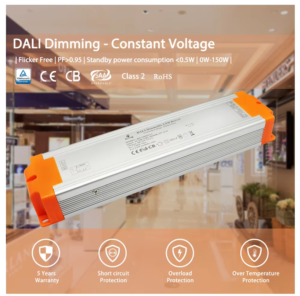随着 LED 灯条在 DIY 项目和便携式照明解决方案中越来越受欢迎,了解如何使用电池为 LED 灯条供电将带来许多创造性的可能性。电池供电具有灵活性和便携性,非常适合无法插入插座的项目。本指南将逐步介绍如何使用电池为 LED 灯条供电、选择合适的电池类型、正确接线以及延长电池寿命,从而实现高效、持久的照明。
LED strip lights can be powered by batteries by using compatible battery packs that match the LED strip's voltage, typically 12V or 24V. This approach offers a flexible, mobile lighting option ideal for places without direct power access.

为什么要用电池为 LED 灯条供电?
LED 灯条通常由墙壁插座供电,但使用电池可提供更多的多功能性。 电池供电的 LED 灯条 可用于活动、户外设置、露营,甚至应急照明。只要选择合适的电池并进行适当的设置,就能创建一个满足您特定需求的移动照明系统。
步骤 1:选择正确的电池类型
您选择的电池类型会直接影响 LED 灯条的性能和运行时间。以下是最常用的 LED 灯条电池:
- AA 和 AAA 电池:
- 优点:可广泛使用,价格低廉,可用于低功率要求的小型项目。
- 缺点:电压较低(每节电池通常为 1.5V),因此可能需要多节电池才能获得较高的电压。
- 锂离子电池:
- 优点:可充电、重量轻,有各种电压(3.7V、7.4V、11.1V 等),是 LED 灯条的热门选择。
- 缺点:初始成本较高,需要充电器;某些锂离子电池可能需要保护电路,以避免过度放电。
- 9V 电池:
- 优点:连接简单,可为临时设置的短 LED 灯条供电。
- 缺点:电池寿命有限,不适合较长的 LED 灯条,因为它们放电速度快,需要较高的功率。
- 12 伏电池组:
- 优点:这些电池专为兼容 12V LED 灯条而设计,可为更长或更高功率的灯条提供可靠、高效的电源。
- 缺点:体积和重量较大;通常需要特定的充电器。
您可以在电池上找到 mAh 值。以下是一些标准电池的 mAh 值。
AA 干电池:400-900 mAh
AA 碱性电池:1700-2850 毫安时
9V 碱性电池: 550 mAh
标准汽车电池:45,000 mAh
选择正确的电池是成功安装的基础,因此必须使 LED 灯条的电压与您的电源需求相匹配。
步骤 2:了解电压兼容性
大多数 LED 灯条的工作电压为 12V 或 24V。 电压兼容性 这一点在选择电池时至关重要。如果使用的是 12V LED 灯条,则需要 12V 电池组,24V 灯条也是如此。电压不匹配会导致照明效率低下,甚至损坏 LED 灯带。
例如
- 12V LED 灯条:适用于 12V 电池组,可串联 8 节 AA 电池(每节电池 1.5V)。
- 24V LED 灯条:需要两个串联的 12V 电池或一个特定的 24V 电池组。
串联使用多个电池时,应确保它们连接牢固且类型相同,以避免不平衡。
步骤 3:根据耗电量计算电池寿命

要充分利用电池供电的 LED 设备,需要估算电池的使用寿命。电池寿命取决于 电池容量(毫安或安时) 和 LED 灯条的功耗.
- 确定耗电量:查看 LED 灯条上标明的每米功率(如 14.4W/m)。
- 计算总耗电量:用瓦特数乘以灯带总长度,得出总耗电量。
- 计算电池使用时间:
- 使用公式 电池寿命(小时)= 电池容量(瓦特)/总功耗(瓦特)
- 例如,容量为 24 瓦时(Wh)的 12 伏电池为耗电 4.8 瓦的 LED 灯条供电,可持续约 5 小时。
有了对电池使用时间的估计,您就可以制定相应的计划,必要时选择容量更大的电池或降低亮度以延长运行时间。
步骤 4:将 LED 灯条连接到电池
将 LED 灯条连接到电池组很简单,但需要注意极性和安全连接。
- 检查极性:将电池的正极与 LED 灯条的正极相匹配(通常标有 "+")。
- 连接端子:使用绝缘导线或连接器将电池组的端子连接到 LED 灯条上。
- 安全连接:如果设备需要经常移动或处理,请用胶带或连接器固定连接,以防断开。
- Optional - Use a Battery Holder:对于使用多节 AA 或 AAA 电池的设置,电池座可在保持安全连接的同时方便地更换电池。
正确的布线可确保电流畅通,降低短路或意外断开的风险。
电池能为 LED 灯条供电多长时间?
To estimate how long a fully charged battery can power an LED strip, you'll need two key pieces of information: the battery's capacity and the LED strip's power consumption.
电池容量
电池容量通常标注在电池本身上,它告诉您电池可以存储多少能量。例如,我们来看看容量为 2500mAh 的 12V 锂电池。
LED 灯条的耗电量
LED 灯条的耗电量通常标注在标签上,单位为瓦特/米。要计算总耗电量,可将灯带的每米瓦数乘以其长度(以米为单位)。
For instance, if you have a 12V LED strip rated at 6W per meter and it's 2 meters long, the total power consumption would be:
[ 6W/m x 2m = 12W ]
我们还在线提供了 LED 灯条功率计算器,请点击此处、 LED 驱动器计算器.
计算
计算电池可为 LED 灯条供电的时间:
- 计算电流:用总功率(瓦)除以电压(伏),得出电流(安)。

- 将电流乘以 1000,转换成毫安 (mA):

- 计算电池运行时间:用电池容量(毫安时)除以电流(毫安),即可得出电池的运行时间(小时)。

因此,在这个例子中,电池可为 LED 灯条供电约 2.5 小时。
延长电池寿命的小窍门
电池寿命可能是一个限制因素,尤其是对于大功率 LED 灯条而言。以下是一些最大限度提高使用率的策略:
- 使用调光器:调光器可通过降低亮度来减少耗电量,从而大大延长电池寿命。
- 安装开关:增加一个开/关开关,可以在不需要时关闭电灯,从而节省电能。
- 选择充电电池:可充电电池(如锂离子电池)可多次充电,经常使用非常经济实惠。
- 减少带材长度:缩短带子可减少耗电量,使设置更节省电池。
遵循这些提示可以帮助你充分利用电池供电的 LED 灯,尤其是在长时间使用或不方便更换电池的地方。
使用带电池的 RGB LED 灯条

如果您使用的是 RGB LED 灯条,它们通常会附带用于调节颜色和亮度的控制器。以下是电池供电的 RGB 设置的注意事项:
- 使用兼容的控制器:确保控制器的工作电压与 LED 灯条和电池的电压相同。
- 耗电量:由于增加了颜色通道,RGB 灯条可能会消耗更多电量,因此应考虑使用容量更大的电池或使用调光器来降低亮度。
- 连接:将控制器连接至电池组,确保极性正确,然后将 LED 灯条连接至控制器。
RGB LED 灯条非常适合营造氛围,但要注意的是,根据所选颜色和亮度的不同,它们可能需要更频繁地更换电池。
LED 灯条的替代电源
除了传统电池,这里还有 LED 灯条的替代电源:
- USB 移动电源:有些 LED 灯条与 USB 兼容,可以用 USB 存储器为其供电。这是一种经济实惠、便于携带且可充电的选择。
- 太阳能电池板:太阳能电池组是一种环保选择,非常适合户外项目。
- 汽车电池:适用于 12V LED 灯条,尤其适用于汽车或 RV 设置。使用保险丝并确保安全布线,以防过载。
上述每种选择都提供了无需墙壁插座即可为 LED 灯条供电的额外方法,为各种环境提供了多功能性。
使用电池为 LED 灯条供电时的安全注意事项
在使用电气元件时,即使是低压 LED 灯条,安全也是至关重要的:
- 使用保险丝:保险丝可保护 LED 灯带和电池免受潜在短路的影响。
- 避免过热:检查电池是否过热,尤其是锂离子电池,它们对高温很敏感。
- 安全连接:松动或裸露的电线会造成危险。请务必用胶带粘贴或固定连接处,并保持绝缘。
- 使用正确的充电器:对于充电电池,请务必使用制造商推荐的充电器,以防止过度充电或损坏电池。
采取这些预防措施可确保安全耐用的电池供电 LED 设置。
- 1.LED 灯条可以用电池供电吗?
是的,LED 灯条可以用电池供电,是便携式照明的多功能选择。只需选择与 LED 灯条电压要求相匹配的电池(通常为 12V 或 24V),并按照正确的接线说明安装电池供电的 LED 灯即可。
- 2.哪种电池最适合 LED 灯条?
最佳电池类型取决于您的具体需求。对于较小的项目,AA 或 AAA 电池效果很好。锂离子电池或 12V 可充电电池组是较长 LED 灯条或较永久性装置的理想选择,因为它们能提供更持久的电力,而且更节能。
- 3.如何计算 LED 灯条的电池寿命?
要估算电池寿命,用电池容量(瓦特-小时)除以 LED 灯条的耗电量(瓦特)。例如,如果用容量为 24 瓦时的 12V 电池为 4.8 瓦的 LED 灯条供电,则预计运行时间为 5 小时。
- 4.我可以用 USB 存储卡为 LED 灯条供电吗?
是的,如果你的 LED 灯条有一个兼容 USB 的连接器,你就可以使用 USB 存储卡作为电源。这对于短期照明需求或便携式装置来说是个方便的选择,尤其是对于专为 USB 电源设计的 5V LED 灯条。
- 5.如何延长 LED 灯条的电池寿命?
使用调光器降低亮度、安装开/关开关、选择大容量电池或可充电电池,以及尽量缩短 LED 灯条的长度以降低功耗,都可以延长电池寿命。
- 6. Can I use a car battery to power LED strip lights?
是的,12 伏汽车电池可以用来为 12 伏 LED 条形灯供电,因此适用于汽车或房车应用。确保使用保险丝并遵守安全预防措施,以避免超载或损坏设备。
- 7.电池供电的 LED 灯条在户外使用是否安全?
如果安装不受天气影响,电池不受潮湿影响,电池供电的 LED 灯条可以在户外使用。如需长时间在户外使用,可考虑使用防风雨 LED 灯条和电池外壳来保护组件。
- 8.如何安全地将 LED 灯条连接到电池上?
将电池的正极 (+) 连接到 LED 灯条的正极,负极 (-) 连接到负极。用电工胶带固定所有连接,或使用电池座进行稳定安装。始终确保电池电压符合 LED 灯条的要求。
- 9.RGB LED 灯条可以用电池供电吗?
是的,RGB LED 灯条可以用电池供电,不过可能比单色灯条耗电更多。使用与电池设置兼容的 RGB 控制器可有效调节颜色和亮度,并可考虑使用容量更大的电池来满足额外的电力需求。
- 10.使用充电电池时应采取哪些预防措施?
使用充电电池时,请使用适合电池类型的正确充电器,避免过度充电,切勿将电池置于极热环境中。此外,要长期监控电池的健康状况,因为充电电池会随着反复使用而老化。
结论:利用电池供电的 LED 灯条实现便携式灵活照明
电池供电的 LED 灯条是创意照明项目、便携式装置和临时安装的绝佳解决方案。通过选择合适的电池类型、计算电源需求和遵循安全布线规范,您可以在任何地方享受灵活的照明。有了 USB 电源箱和太阳能电池板等选择,创建一个符合您需求的环保移动照明系统比以往任何时候都要容易。
电池供电的 LED 带来了无限可能,从美化工作空间到营造偏远地区的氛围,所有这些都不需要电源插座。快乐照明






